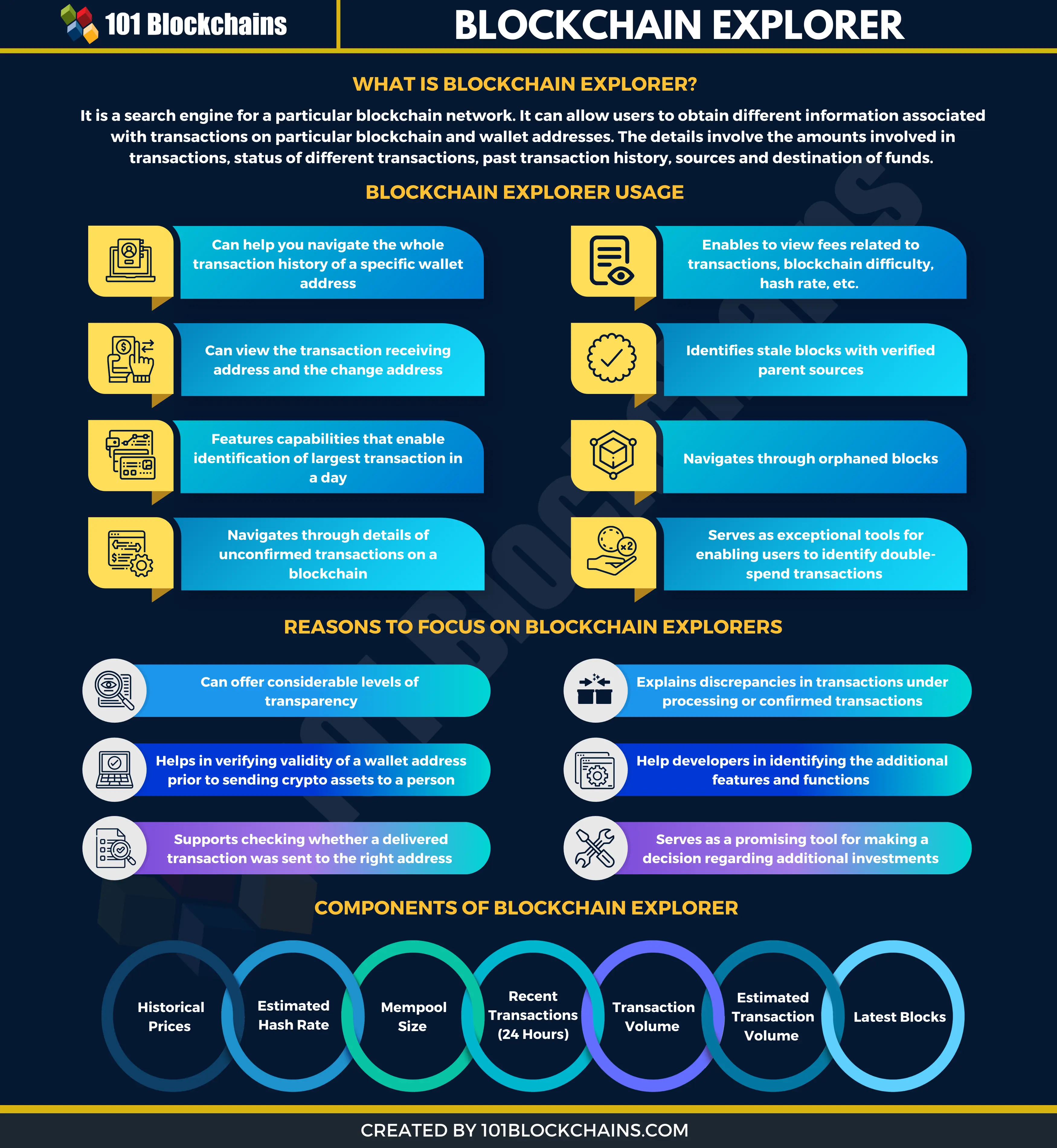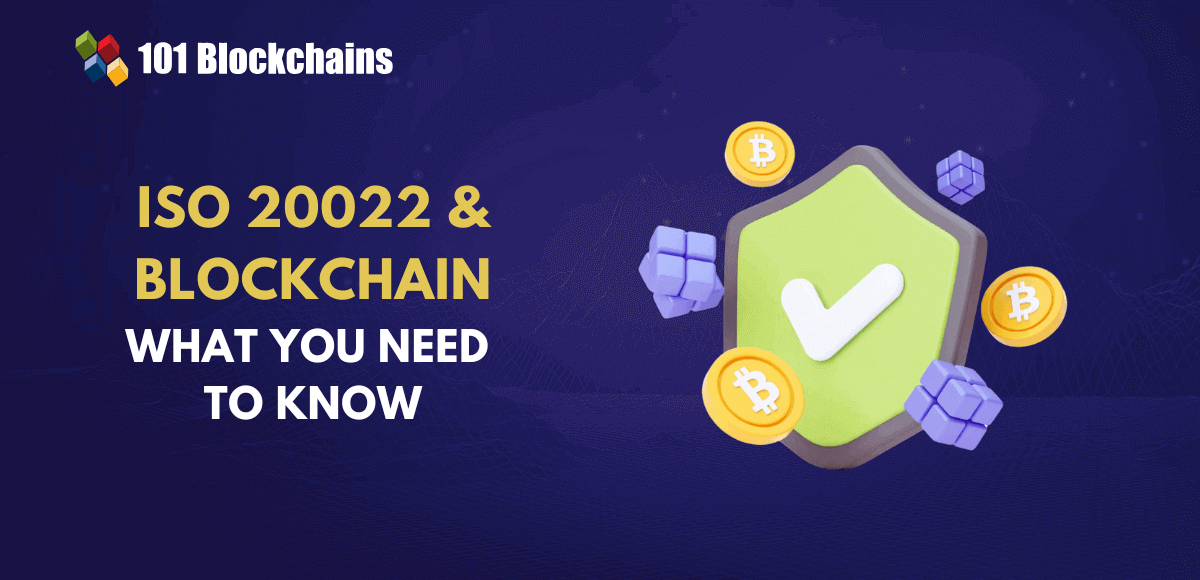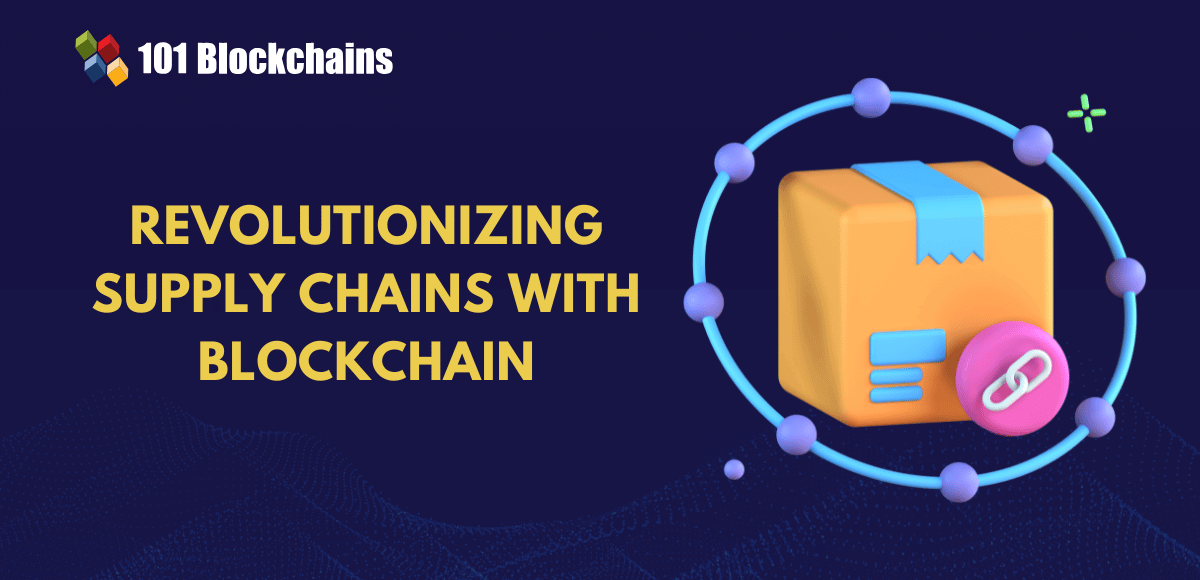Learn how blockchain truly works, master key definitions, and uncover what makes smart contracts so "smart." Dive into the fundamentals, gain valuable insights, and start your blockchain journey today!
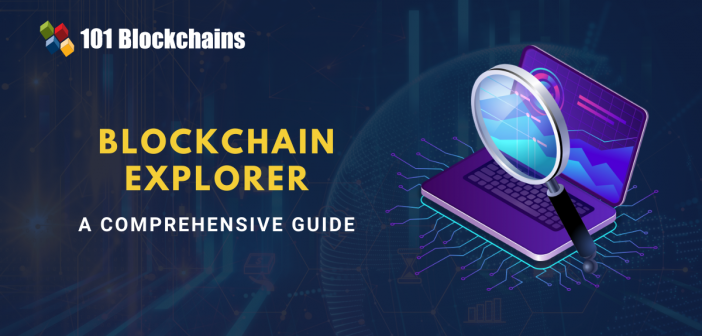
- Blockchain
Diego Geroni
- on May 11, 2021
Know Everything about Blockchain Explorer
Blockchain technology or popularly known as distributed ledger technology generally works in the form of a peer-to-peer network. The individual nodes or computers are under safeguards of cryptography with the support of different blockchain-specific protocols for conducting transactions.
Even if blockchain was developed as the foundation technology for cryptocurrency platforms such as Ethereum, Bitcoin, and others, it has found applications across multiple industries. The independent and transparent verification processes on blockchain are the foremost reason for its wide-ranging applications in different sectors.
However, the most common aspects of using blockchain include the management of digitized assets and execution of transactions. Blockchain explorer is one of the prominent examples of specialist tools for viewing and managing digitized assets. The following discussion dives into a detailed overview of the definition, working, and ways to use the unique tool for exploring blockchain.
Build your identity as a certified blockchain expert with 101 Blockchains’ Blockchain Certifications designed to provide enhanced career prospects.
What is Blockchain Explorer
One of the first concerns in any blockchain explorer tutorial directly refers to the definition. It is basically a search engine for a particular blockchain network. In the world of cryptocurrency, tools such as Bitcoin Block Explorer can allow users to obtain different information associated with transactions on particular blockchain and wallet addresses.
The details generally involve the amounts involved in transactions, status of different transactions, as well as sources and destination of funds. The block explorer serves as a search engine that can showcase information regarding the past as well as existing status of a blockchain.
Please include attribution to 101blockchains.com with this graphic. <a href='https://101blockchains.com/blockchain-infographics/'> <img src="https://101blockchains.com/wp-content/uploads/2021/04/blockchain-explorer-infographic.png" alt="blockchain explorer infographic" border='0' /> </a>
A blockchain explorer helps users in viewing all transactions on a public blockchain with ease. The block explorer can also support users with easier accessibility of almost any data associated with blockchains, transactions, and wallets. Interestingly, users could also access hidden messages and rich lists in the data related to blockchains.
Although the basic definition of block explorer provides a simpler meaning to the tool, it is important to reflect on the technical aspects of the tool. The answer to ‘What is blockchain explorer?’ from a technical perspective presents it as software with API and blockchain node. The software utilizes blockchain nodes and API for drawing different types of data from the blockchain network.
Subsequently, the explorer leverages a database for arranging the data searched by users and presenting it to users in an understandable format. In the case of majority of users, blockchain explorer could help in searching and exploring data regarding blocks that have been mined recently or the recent transactions on blockchain. In addition, explorer can also allow users to view a live feed of blocks in the process of mining alongside the data associated with the blocks.
Origins of Blockchain Explorers
So, where did all this start? The concept of blockchain explorers arrived alongside blockchain technology primarily for resolving difficulties in investigating blockchains for transactions. For example, you want to verify whether a person’s claim of sending you cryptocurrencies is true or not. In some cases, the transaction might have been stalled or rejected completely.
Furthermore, navigating blockchains presented formidable difficulties, especially due to formatting of data in a specific manner. Blockchain stores and organizes data in an organized manner, thereby presenting it in an indexed and grouped format. Therefore, additional software was mandatory for ensuring better accessibility and readability of the information on blockchain.
Command-line interface offered the best instrument for exploring the information about transactions on blockchains. However, professional programming expertise is required for exploring the transactions on blockchain through a command-line interface. Therefore, an easy-to-use graphical user interface for navigating through blockchain transactions was necessary for usability of blockchain platforms.
The first-ever blockchain explorer, tailored for Bitcoin blockchain, was introduced in November 2010, just around the time when Bitcoin was going live. The explorer offered information regarding Bitcoin, and subsequently, it was shifted to blockexplorer.com, which displays real-time stats for Bitcoin blockchain. However, there were many other real-time stats pages prior to Bitcoin block explorers, such as getblockcount and getdifficulty. Here is a simple visual overview of the history of blockchain explorers –
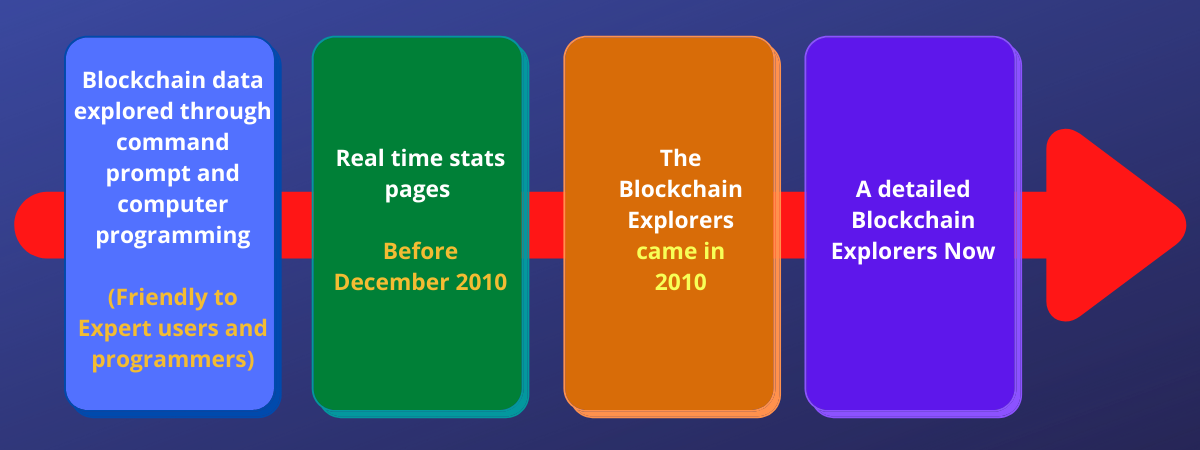
Without a proper business model in mind, it’s difficult to use blockchain as leverage. Check out our ultimate blockchain implementation strategy to learn more about developing blockchain.
How Do I Use Blockchain Explorer?
The next important question in a blockchain explorer guide would automatically turn towards using the tool. Any beginner would wonder about the different actions they can take with blockchain explorer while learning about it for the first time. Here is an outline of some of the ways in which you can use blockchain explorers.
1. Blockchain explorers can help you navigate the whole transaction history of a specific wallet address. They could enable users to audit specific wallet addresses alongside improving transparency on a blockchain. Here is an example image to show the use of blockchain explorers for viewing latest transaction history.
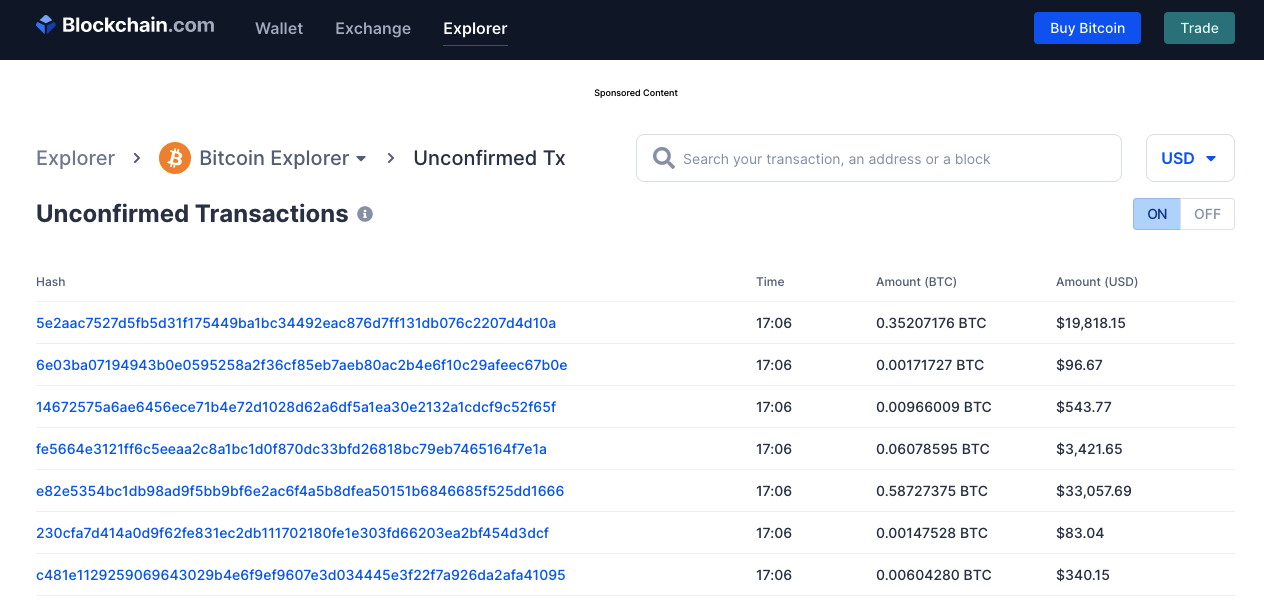
Image Source: www.blockchain.com
2. The next answer to ‘How do I use blockchain explorer?’ is evident in exploring the change addresses and receiving addresses. Apart from the transaction receiving address, users could also view the change address. The change address is crucial for avoiding the transfer of excessive input value to transaction fees, thereby improving transaction transparency.
3. Some of the blockchain explorers also feature capabilities that enable identification of largest transaction in a day.
4. You can also use a blockchain explorer for navigating through details of unconfirmed transactions on a blockchain. Users can access the details of unconfirmed transactions through Mempool Status.
5. Blockchain explorers are also applicable for identifying stale blocks with verified parent sources, albeit without any association to the longest chain.
6. Another important application of blockchain explorers you may come across when you learn blockchain explorer details involves navigating orphaned blocks. The orphaned blocks refer to the ones without any verified parent blockchain or attachment to the longest blockchain.
7. Furthermore, blockchain explorers can also serve as exceptional tools for enabling users to identify double-spend transactions on the blockchain network.
8. A block explorer could also enable users to view fees related to transactions alongside blockchain difficulty, hash rate, and other details.
9. The applications of blockchain explorers in a blockchain explorer tutorial should also include the functionalities for navigating the pool of miners or individuals responsible for mining a particular block in any concerned blockchain. The explorers can help in finding out the individuals or groups who have mined a particular block on the basis of its height.
10. Most important of all, blockchain explorers can also help in exploring the genesis blocks or the foundation blocks of blockchain. Users can easily find out the first block mined on a specific chain alongside the miner and other associated details.
Start your blockchain journey Now with the Enterprise Blockchains Fundamentals
Reasons to Focus on Blockchain Explorers
The different answers to ‘How do I use blockchain explorer?’ clearly show that it helps in efficient management of blockchain. However, why blockchain explorers are the particular choice for diving into details about a blockchain? You could try out other alternatives for navigating and managing assets on blockchain, such as blockchain wallets that can offer access to different types of data.
However, the data you can view with blockchain wallets are generally restricted to data associated with keys under management of the wallet. On the other hand, blockchain explorers could help in viewing data associated with transactions executed on all wallets of a specific blockchain. Now, let us take a look at the reasons for which you should prefer blockchain explorer over other blockchain management tools.
- Blockchain explorers can offer considerable levels of transparency by allowing users to check balances and expenditures on smart contract addresses.
- Block explorer can also help in verifying validity of a wallet address prior to sending crypto assets to a person.
- Blockchain explorers can also support checking whether a transaction has been delivered to the person it is meant for. It basically public evidence for the fact that you have carried out a transaction with the concerned individual. In addition, the explorer also enables owners to check wallet balances easily.
- Another interesting aspect of blockchain explorer tutorial refers to their capabilities for explaining discrepancies in transactions under processing or confirmed transactions. In addition, blockchain explorers can also help in finding out the setbacks in the different phases of confirmation.
- The explorers can help developers in identifying the additional features and functions they need in wallets and other software. In addition, developers could also ensure efficient programming of their wallets for sending, receiving, and storing cryptocurrencies.
- Most important of all, blockchain explorer can serve as a promising tool for making a decision regarding additional investments in computing resources for mining activity in the future.
How Do Blockchain Explorers Work?
With a clear impression of the definition, applications, and reasons to use blockchain explorers, it is reasonable to move towards the next critical aspect of a blockchain explorer guide. The working of blockchain explorers is an exciting aspect for any beginner while learning about them. Here is an example of the most common block explorer blockchain.com to understand the working of blockchain explorers.

Image Source: www.blockchain.com
The definition of blockchain explorers as simple search engines for blockchain networks creates interest in ‘How do blockchain explorers work?’ and the example of blockchain.com can help in understanding how it works. First of all, you should understand that it is a graphical user interface or GUI that helps you navigate blockchain. The front page of the blockchain explorer shown above clearly presents high-level data regarding the Bitcoin blockchain.
Some of the notable details on the front page include a daily number of transactions, transaction volume, price, and estimated hash rate. In addition, you can also find charts with detailed mapping of price and mempool size. The bottom of the explorer’s interface can help in monitoring latest blocks and transactions. Let us take our understanding of the working of blockchain explorers to the next level by exploring its components.
-
Price
The price section in the explorer portal represents an aggregated USD price feed throughout different markets. In majority of cases, the price factor is directly related to the feed’s provider without any indications of spot prices.
-
Transactions
Transactions in the blockchain explorer portal represent the different unique transactions carried out in the course of the last 24 hours. A transaction should be in a validated block for confirmation.
-
Estimated Hash Rate
The blockchain explorers could also provide a visual representation of the predictions for computing resources implemented by miners for blockchain. The estimated hash rate is generally perceived as the proxy for security in a Proof of Work (PoW) blockchain.
-
Mempool Size
The mempool size is also one of the important aspects that you would encounter when you learn blockchain explorer functionalities. It can help in tracking the aggregate size of transactions, generally in bytes, awaiting inclusion in a specific block. The mempool size basically serves as a proxy for the volume of activity on the blockchain. Most important of all, it can also showcase the fees needed for faster confirmation of transactions.
-
Transaction Volume
Transaction volume represents the overall value of outputs that have been confirmed on the blockchain in the recent 24 hours. The total transaction volume also adds up unspent outputs that are reverted back to the ‘spending’ wallet in the form of change.
-
Estimated Transaction Volume
Estimated transaction volume refers to the estimate of actual transaction volume shifted among unique wallets. The estimated transaction volume is the difference between transaction value and estimate of outputs returning to ‘spending’ wallet as change.
-
Latest Blocks
One of the most functional factors in the working of a blockchain explorer refers to latest blocks. The latest blocks functionality in block explorers could help in outlining the confirmed blocks, beginning from newest to oldest. The functionality can provide information about the blocks, such as timestamp, block size, and block height.
Curious to learn about blockchain implementation and strategy for managing your blockchain projects? Enroll Now in Blockchain Technology – Implementation And Strategy Course!
Final Words
On a final note, you can clearly notice the different fundamentals of blockchain explorers from this discussion. A blockchain explorer offers the most flexible and easy tool for using blockchain functionalities without any professional programming expertise. Learning more about blockchain explorers is an essential requirement for every aspiring blockchain professional.
As a matter of fact, blockchain explorers are suitable for technical as well as managerial roles associated with blockchain. Blockchain explorers can provide the ideal foundation for better financial decisions for blockchain projects alongside improving solution quality. So, start navigating through the world of blockchain explorers and master the reins of blockchain technology now!
*Disclaimer: The article should not be taken as, and is not intended to provide any investment advice. Claims made in this article do not constitute investment advice and should not be taken as such. 101 Blockchains shall not be responsible for any loss sustained by any person who relies on this article. Do your own research!

